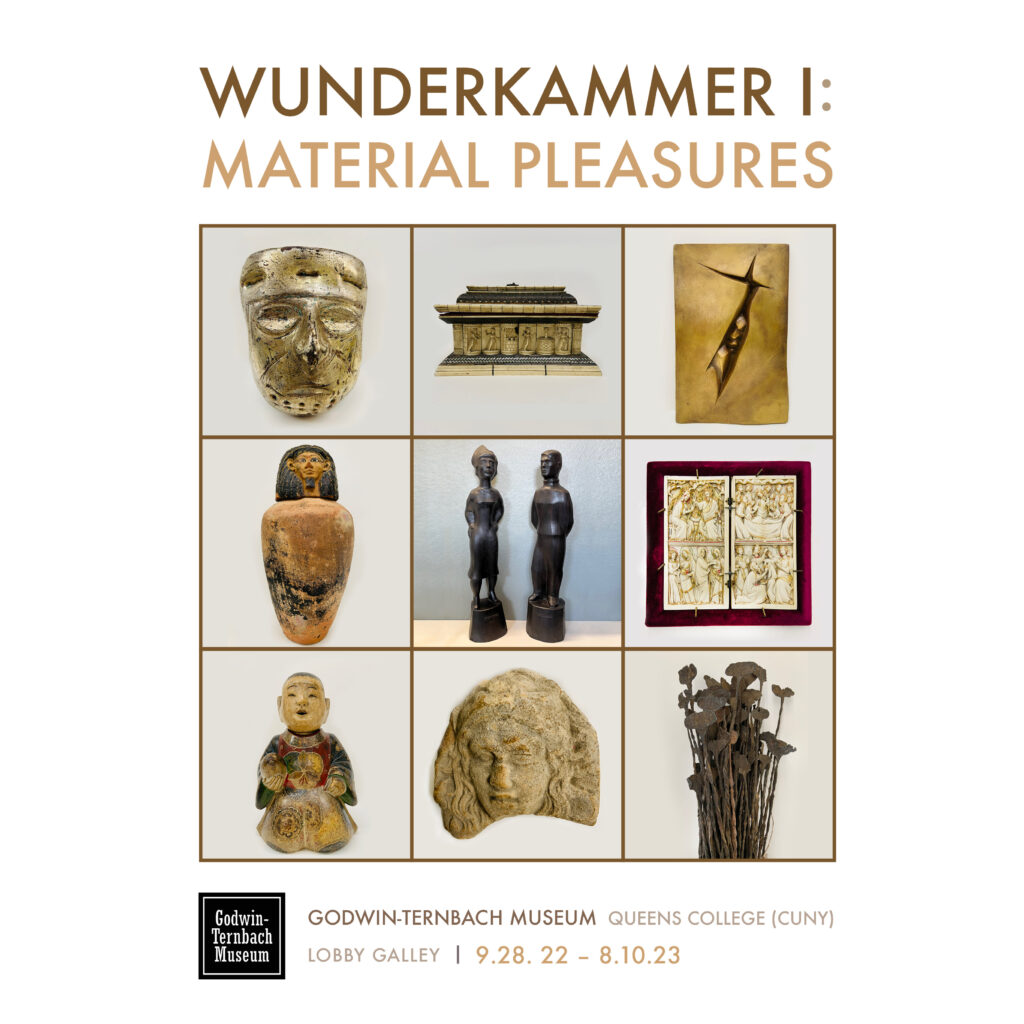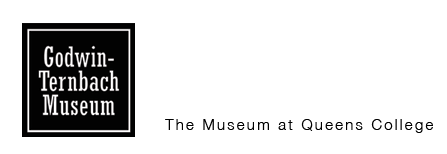
Periodically, Godwin-Ternbach Museum chooses to shine a light on the legacy of its founders. This exhibition honors the primary mission and values of Dr. Frances Gray Godwin and Joseph Ternbach. That is, to develop a teaching collection for students to be able to physically handle and study works of art and cultural artifacts without the usual restrictions imposed by a typical museum environment, and to create a general resource for the wider communities of Queens and New York City. Their fortuitous introduction to each other by Ternbach’s daughter in 1957 created what is today a world class institution.
The wunderkammer, a cabinet of wonders, housed collections from all over the globe in one marvelous space, either an actual cabinet, or a room or a series of rooms devoted to the tastes of the individual owner. In the 16th and 17th centuries, wealthy patrons of mostly European descent were able to gather and amass objects of biological or scientific curiosity, alongside objects of devotion or spiritual presence. A panoply of micro to macro universes were revealed by the invention of microscopes and telescopes, literally exposing new depths of knowledge and observation.
We present this selection of objects in a non-hierarchical, non-linear arrangement. Challenging the conventions of a typical museum installation in the service of creating an “inclusive museum,” this room of art and marvels strives to capture the attention and imaginations of our students, many of whom are not even studying art or art history. While rushing past to a class or appointment, to a job or home, we strive to inspire wonder through exposure to this diverse, unique collection.
Support for this exhibition and related programs has been provided by the Milton & Sally Avery Arts Foundation, NYC Department of Cultural Affairs, Kupferberg Center for the Arts, and Queens College, CUNY.
